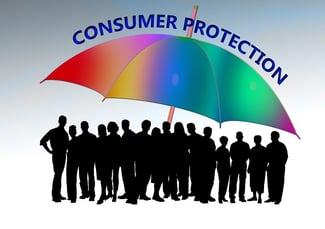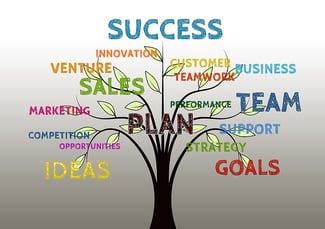
By: Jonathan Osorio
Jul 14, 2016
What is a Thank You Page? - Inbound Marketing Terms in 150 Words
A thank you page is presented after a lead submits a form on a landing page. A thank you page, as implied, thanks your new lead for their interest in your offer and delivers to your lead the content that was offered. While a thank you page marks the end the conversion process, it provides the opportunity to move your lead further along in the buyer’s journey by providing new content offers, links to blog posts or social media profiles.

By: Jonathan Osorio
Jun 21, 2016
What is a Landing Page? - Inbound marketing Terms in 150 words
A landing page is a web page that is designed to convert visitors into leads. A landing page is essential in lead generation as it has the content offer that draws a visitor in and the form through which an unknown visitor becomes a known lead. A visitor reaches a landing page by clicking on a Call to Action and converts from visitor to lead after completing the form on the page.


By: Jonathan Osorio
Jun 16, 2016
How to identify the different types of leads?
The base of an Inbound Marketing strategy are the qualified leads for the company and these normally are generated when we offer them valuable content for them and through a form that must operate in a landing page, where they give us their personal information. We follow up and educate them with even more content ready for that prospect and get the lead identified in the sales funnel, depending of the stage the lead is currently at.

By: Jonathan Osorio
Jun 14, 2016
What is Call to Action? - Inbound Marketing Terms Under 150 Words
A Call-to-Action (commonly referred to as a CTA) is an image, button or line of text that encourages your audience to take action on a specific offer. The main purpose of a CTA is to provide something of value to your audience that in turn will bring them further into the sales funnel. Common Calls to Action include downloading an eBook, registering for product demo or signing up for an event or newsletter, among other options.

By: Jonathan Osorio
Jun 07, 2016
What is Inbound Marketing - Inbound marketing Terms in 150 words
Inbound marketing is the process that focuses on attracting customers or leads by aligning the content you publish with the interests and needs of prospective customers. The purpose of inbound is to use content offers to naturally attract leads, who you then can convert, close and delight over time. In contrast to inbound marketing, traditional marketing generally uses techniques that are interruptive by pushing content to individuals whenever the marketer wants even when potential customers don’t want it.


By: Jonathan Osorio
Jun 02, 2016
How to nurture leads to harvest customers
When we speak about marketing the first thing on our minds is advertisement for a product or service, but this goes beyond these two steps. Marketing is an investment in sales and furthermore when we implement an inbound marketing methodology.The goal is that the sales team is speaking with qualified prospects to improve the efficiency of their efforts and be able to achieve the company's goals. What it is not recommended to do is to invest the time of our sales team in prospects that aren't actively looking forward to buy our products or services.

By: Jonathan Osorio
May 31, 2016
What is Spam? - Inbound marketing Terms in 150 words
Spam is usually considered to be electronic junk mail or junk newsgroup postings. Some people define spam even more generally as any unsolicited email. However, if a long lost brother finds your email address and sends you a message, this could hardly be called spam, even though it is unsolicited. Real spam is generally email advertising for some product sent to a mailing list or newsgroup.


By: Jonathan Osorio
May 26, 2016
How to Shorten My Sales Cycles with Inbound Marketing
In Marketing, speaking about the sales cycle is a fundamental concept for those who work in this field and for years, we’ve always looked to close our sales in a more short and efficient way.However, all those strategies that we’ve implemented before just left us with data lists of possible leads and we had to give them a follow up that took us forever just to convince them to get our product or service. All of this is now in the past with the implementation of a methodology based on Inbound Marketing.

By: Jonathan Osorio
May 24, 2016
What is Email Marketing? - Inbound marketing Terms in 150 words
Email marketing is the targeting of consumers through electronic mail (email). Often associated with data mining, email marketing can be used to impact consumers in a variety of ways. In general, email marketing is a more evolved, digital form of traditional direct mail marketing. Email marketing is also known as direct email marketing. In a typicalemail marketing scenario, an organization builds an email list to reach or inform established and prospective customers.


By: Jonathan Osorio
May 19, 2016
How to eliminate Marketing and Sales problems using Inbound Marketing
Nowadays people are talking about inbound marketing but how many people actually know what that is? What benefits it can bring to a company? Why implement an inbound strategy?. These questions and many more come up when people mention this term. Inbound Marketing methodology is the answer to all these changes the consumer behavior has been having in the way they purchase lately since they are no longer willing to allow any publicity interruption like it used to happen before with the traditional communication methods.

